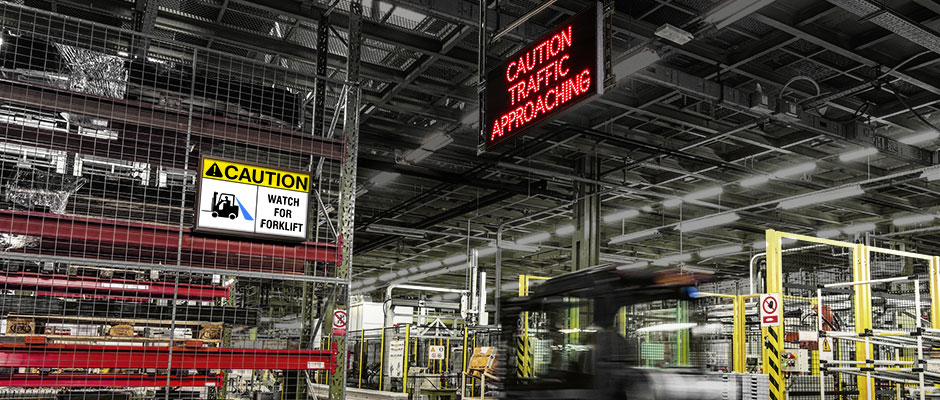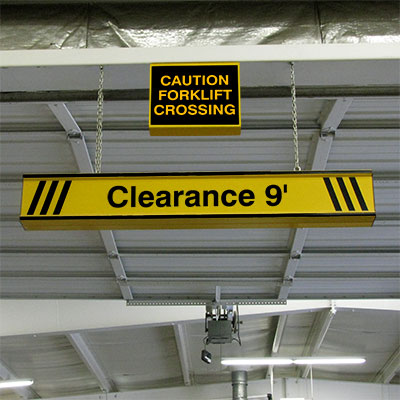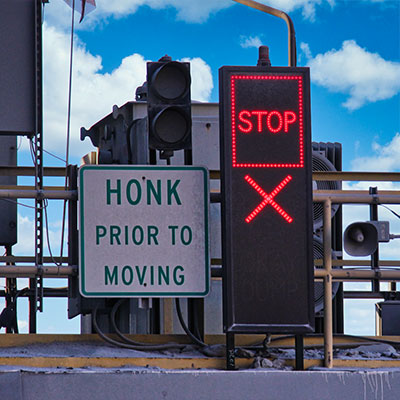News & Articles
Designing Safety Plans That Speak to the Heart — and the Eyes
Sep 30, 2025

When most organizations discuss safety plans, the conversation quickly veers into checklists, compliance documents, and training schedules. Those are key elements that matter, but they rarely inspire employees to act differently. Dale Lesinski’s acclaimed Safe 4 the Right Reasons program flipped that script by focusing on why people should care about safety to start with. By combining his motivational framework with illuminated signage and other visual cues, safety plans can be created that move beyond rules and into the realm of culture.
Why Do Traditional Methods of Safety Planning Fall Short?
Traditional safety plans tend to put emphasis on regulatory language and technical procedures. They tend to explain what must be done and how to do it, but seldom address the personal reasons behind the rules. Without an emotional anchor, even the most comprehensive plan can feel like an obligation instead of a commitment. This is where Safe 4 the Right Reasons shines: it connects safety to what employees value most: health, family, co-workers, and their future.
The Four Core Motivators
Lesinski extracts workplace safety into four personal motivators:
- You – Protecting your own well-being.
- Your Family – Coming home healthy for the people who depend on you.
- Your Co-workers – Keeping teammates safe and productive.
- Your Future – Preserving your long-term earning power and lifestyle.
Including these motivating factors in safety plans transforms them from sterile documents into living commitments. This allows employees to see the hazard and the “why” behind the rule.
Add the Visuals: Illuminated Signage

Humans are naturally visual creatures. Even the best-written procedure can be overlooked if it’s buried in a binder or an email. Illuminated signage, LED message boards, and lighted directional cues place safety reminders directly in the work environment at decision points. That immediacy turns abstract training into real-time guidance.
| Discover Directional Systems’ LED Workplace Safety Signs |
Imagine a production floor where bright, animated signs reinforce lockout/tagout steps or alert workers to approaching forklifts. Those signals don’t just comply with OSHA; they actively prevent injuries by catching attention at the right moment. Integrating illuminated signage into safety plans helps ensure the message is seen, not just read.
Designing Safety to Be Personal
To merge Lesinski’s Safe 4 the Right Reasons with visual communication, safety plans should be considered as both a motivational speech and a design project. Consider these steps:
- Map high-risk zones. Identify critical decision points - machine start buttons, loading docks, chemical storage areas, and plan illuminated cues for those spaces.
- Match messages to motivators. Instead of a generic “Caution” sign, use language and visuals that reference personal stakes. For example: “Stay clear — your family counts on you.”
| Learn How Directional Systems Can Customize Illuminated Signs with Your Unique Messaging |
- Rotate and refresh content. Just like training gets stale, routine, and stagnant, static signage can fade into the background. Programmable LED displays can vary messages and help keep eyes engaged.
- Integrate with training. During onboarding and refreshers, show employees the exact signs they’ll see on the job and explain how those signs tie back to the four motivators.
By designing signage and safety plans, you reinforce the emotional “why” and the visual “how” of safe behavior.
| Download Directional Systems’ LED Safety Signage Brochure |
Measuring the Impact
A plan is only as good as the results it provides. To gauge whether the combined approach of the “why” and the “how” is working:
- Track incident data. Compare near-misses and recordable injuries before and after implementing illuminated signage aligned with Safe 4 the Right Reasons.
- Survey employees. Ask whether illuminated signage helps workers remember procedures and whether the messages feel personally relevant.
- Observe behavior. Walk the floor and see if workers follow the steps proactively without reminders from supervisors.
If the data improves, safety plans will turn from a compliance exercise into a behavioral driver.
| Check Out Directional Systems’ LED Signs for Loading Docks & Warehouses |

Create Culture, Not Just Compliance
When employees see safety as a personal choice rather than a corporate mandate, the company’s culture changes. People speak up about hazards, look out for one another, and view illuminated signage as a helpful tool rather than visual clutter. In this environment, safety plans aren’t dusty binders; they’re living systems supported by real-time cues and personal motivation.
How to Start Implementing Safety Plans That Hit Home
Turning good intentions into daily habits takes more than a well-written policy. These practical tips show how to embed Safe 4 the Right Reasons principles and illuminated signage into everyday routines so your safety plans actually drive behavior.
- Involve employees early. Ask frontline workers which messages resonate with them and where signage would be most effective.
- Keep it positive. Messages that encourage (“Protect your future today”) tend to outperform warnings that punish (“Don’t break the rules”).
- Blend technology and tradition. Illuminated signs are powerful but work best alongside shop talks, peer coaching, and other low-tech reinforcements.
- Review annually. Just as work conditions evolve, so should your plans and signage strategies.
Organizations that align Safe 4 the Right Reasons with illuminated signage will be on a path to see fewer injuries, higher engagement, and stronger morale. Workers feel the company values their well-being, not just regulatory compliance. That perception fuels a virtuous cycle: respected employees are more likely to follow procedures, contribute ideas, and champion safety culture.
Designing a safety program that speaks to the heart and the eyes requires more than copying regulations into a manual. It means weaving together personal motivators, visual communication, and ongoing measurement. When done right, safety plans can become something employees believe in, not just something they sign off on. Illuminated signage keeps the message fresh and visible, while Safe 4 the Right Reasons keeps it meaningful. Want to learn more about illuminated safety signage for your workplace? Contact Directional Systems today!